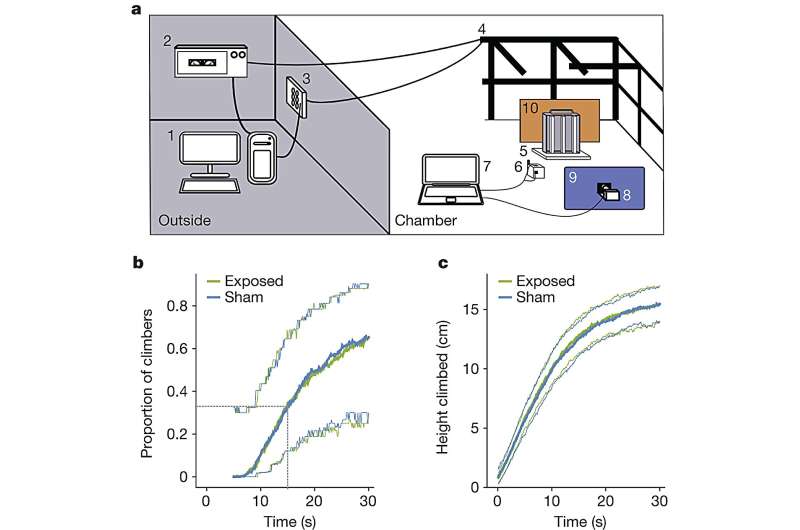August 10, 2023 report
This article has been reviewed according to Science X's editorial process and policies. Editors have highlighted the following attributes while ensuring the content's credibility:
fact-checked
peer-reviewed publication
trusted source
proofread
Replication of prior studies fails to find purported evidence of magnetic sensing in fruit flies

A team of neurosensory researchers from the University of Oxford, Universität Oldenburg and the University of Exeter has replicated landmark studies reporting magnetic sensing in Drosophila fruit flies and failed to find any evidence for it. In their study, reported in the journal Nature, the group meticulously replicated work done by two prior teams with vastly different results. A News and Views piece in the same journal issue discusses the results produced by the team.
In 2008, a team of biologists set out to test the possibility of magnetic sensing in fruit flies—prior efforts had suggested it might exist, but it not been proven. In their effort, the team trained approximately 100 fruit files to associate food with a magnetic field that was stronger than Earth's. The flies were then exposed to a magnetic field in a device built by the team to determine whether they responded in desired ways compared to behavior in the absence of a magnetic field. They reported that behavior by the flies in the device strongly suggested magnetic sensing in fruit flies.
The 2008 findings set off a flurry of research activity, much of which centered on determining the mechanism in the flies that sensed and responded to magnetism. None were found. In 2014, another team tested magnetic sensing in fruit flies using an entirely different approach involving the ability of the flies to climb against gravity and when affected by dim blue lights. They found that the climbing ability of the flies was impacted by the presence of a strong magnet. This finding bolstered the results of the prior studies, leading most in the field to accept magnetic sensing in fruit flies.
In this new effort, the research team noted the lack of progress in finding the mechanism responsible for magnetic sensing in fruit flies in the ensuing years. Sensing that there may have been errors in the prior work, they attempted to replicate the results of both research efforts.
In replicating the prior two efforts, the researchers made some small adjustments. They conducted them in a more secure environment to ensure that no other factors might be impacting the behavior of their test flies. They also tested a lot more flies.
The researchers found no evidence of magnetic sensing in fruit flies in either approach, and suggest that the results of both teams was likely due to false positives.
More information: Marco Bassetto et al, No evidence for magnetic field effects on the behaviour of Drosophila, Nature (2023). DOI: 10.1038/s41586-023-06397-7
Eric J. Warrant, Replication study casts doubt on magnetic sensing in flies, Nature (2023). DOI: 10.1038/d41586-023-02489-6
Journal information: Nature
© 2023 Science X Network




















